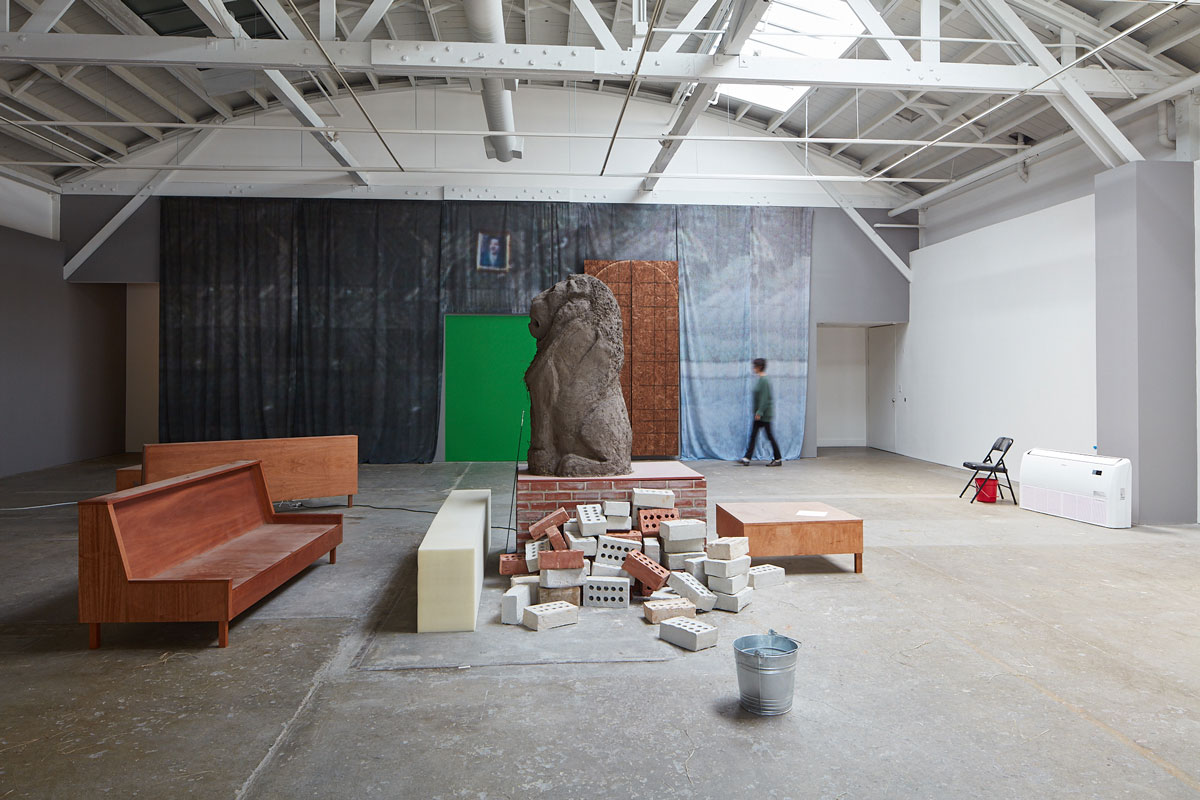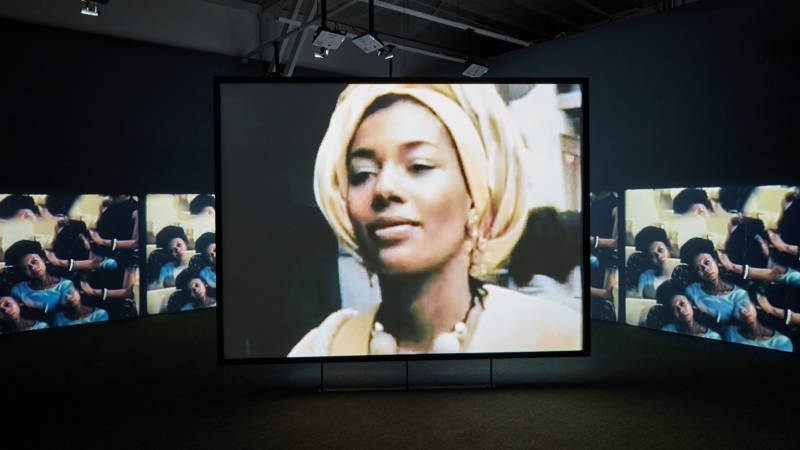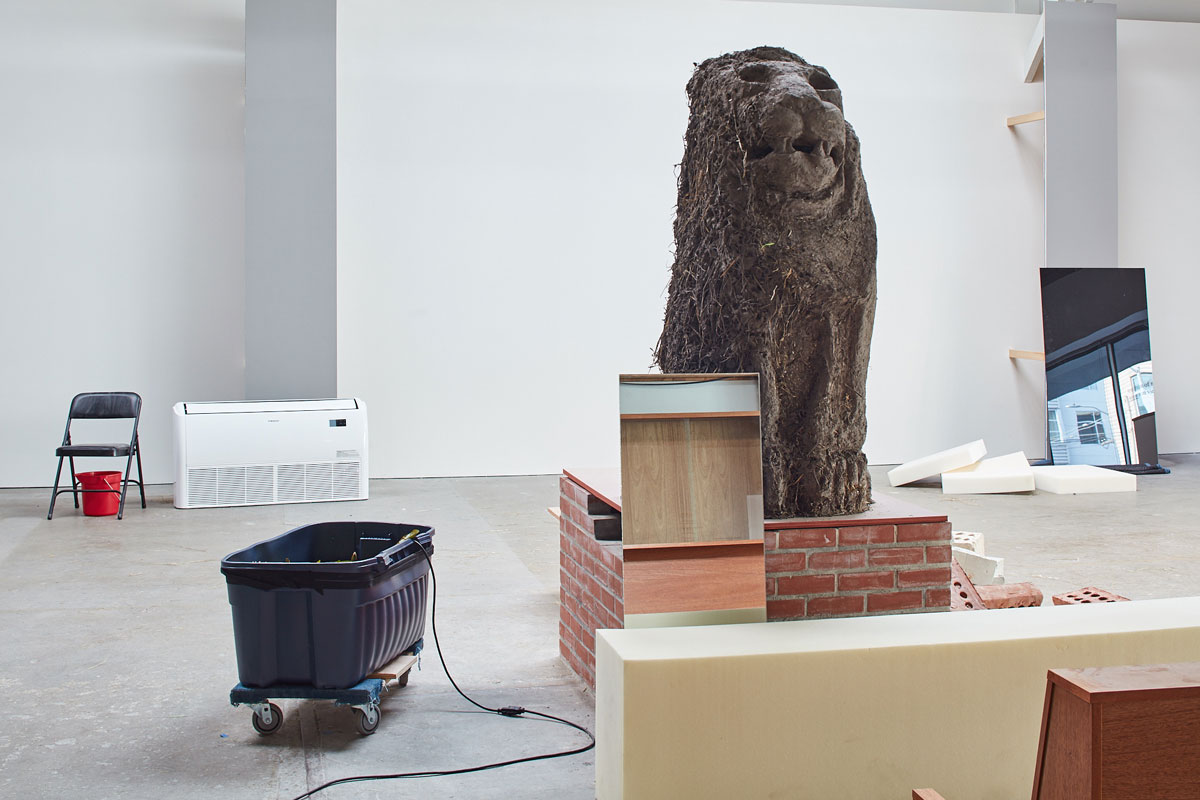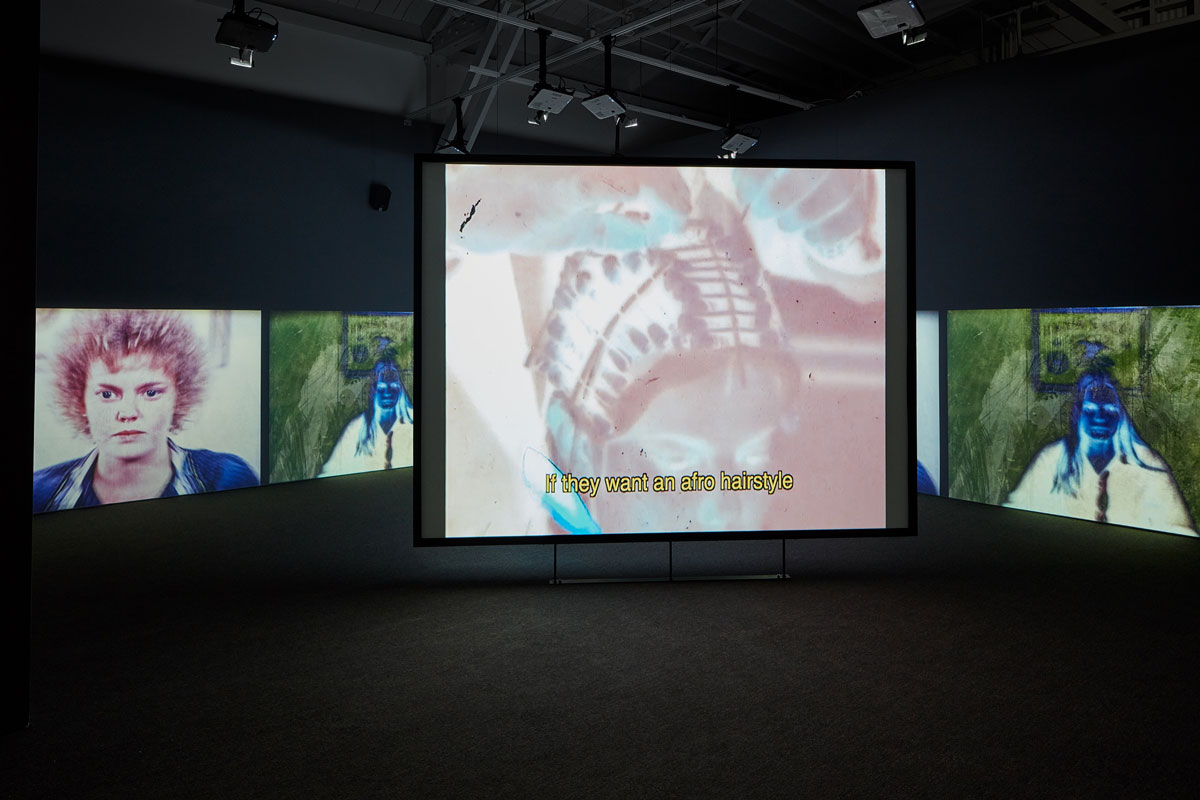Like Heraclitus’ river, you can’t step into the same Wattis Institute twice. Perhaps that’s because its no-frills, white box architecture doesn’t overpower the art. Or maybe it’s because the space has a propensity for nimble, daring exhibition design (led by Calen Barca-Hall), unobtrusively putting each show in its best light. The Wattis is chameleon-like, just like its GIF-filled, constantly-in-motion website (which I think I finally appreciate, years after its debut).
During the last set of exhibitions, newspaper covering the space’s street-facing windows gave the main gallery a secretive, under construction feel. And now, with Abbas Akhavan’s cast for a folly and Akosua Adoma Owusu’s Welcome to the Jungle, the Wattis is transformed once again—through material and lighting choices in the former show and a kaleidoscopic video presentation in the latter.
Though vastly different in subject matter and execution (Akhavan’s show is a sculptural installation, Owusu’s an expanded cinematic experience), both solo shows tackle displacement and cultural loss—as they pertain to objects and people—in deeply affecting and sensorially rich ways.

Warmly, dimly lit, Akhavan’s installation recreates a photograph taken in 2003 of the Iraq National Museum’s main lobby. After three days of looting during the Iraq War, thieves walked away with some 15,000 objects from the museum’s collection, including objects that were over 6,000 years old and heavier than 500 pounds. In addition to priceless artifacts, the looters took computers and office furniture, emptied a safe of employees’ salaries and stole the research director’s camera collection.
“It was a place of protection left exposed, cavernous and bare,” reads Wattis curator Kim Nguyen’s accompanying essay. Assembled within the main gallery, the photograph-turned-three-dimensional-space feels vast and hollow. Its emptiness is enhanced, not lessened, by the detritus Akhavan faithfully approximates, either because these objects are often so materially “off” or because they’re made from enlarged versions of low resolution images, dissolving into enormous pixels.





